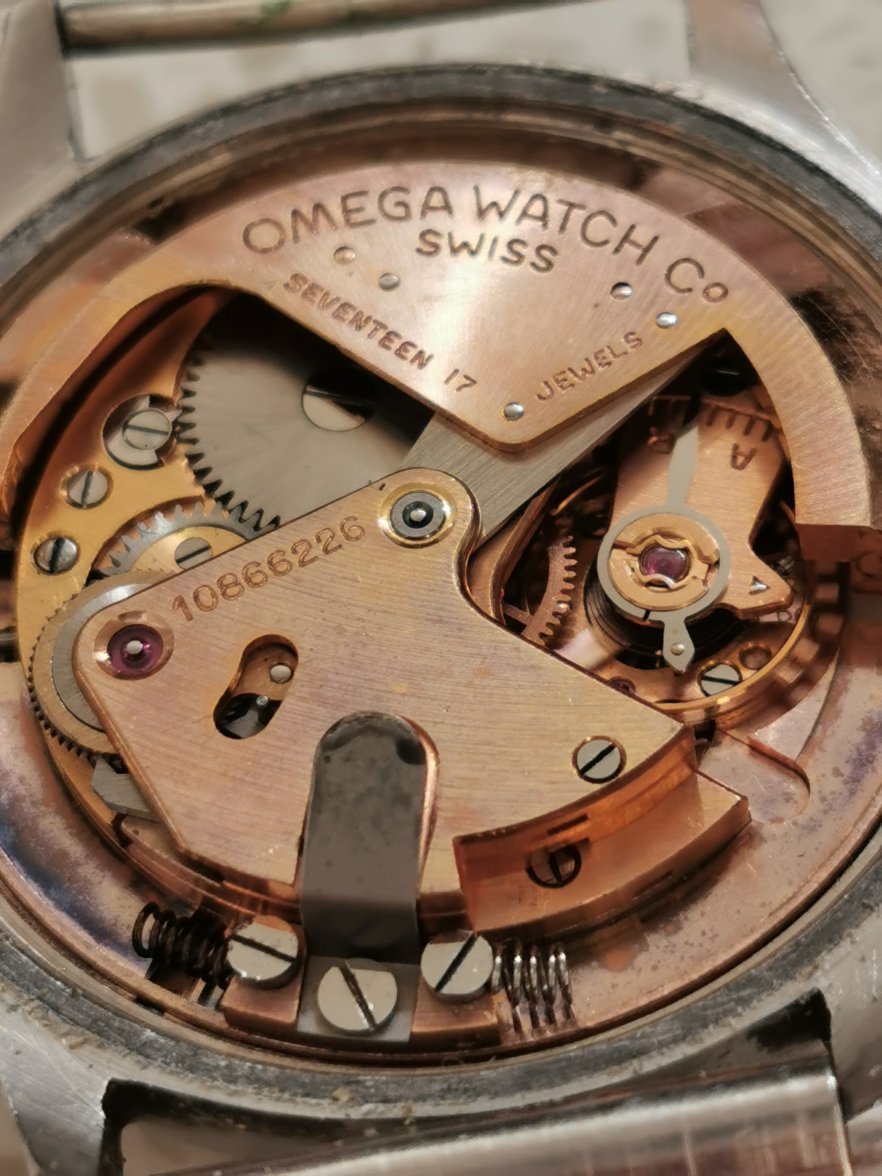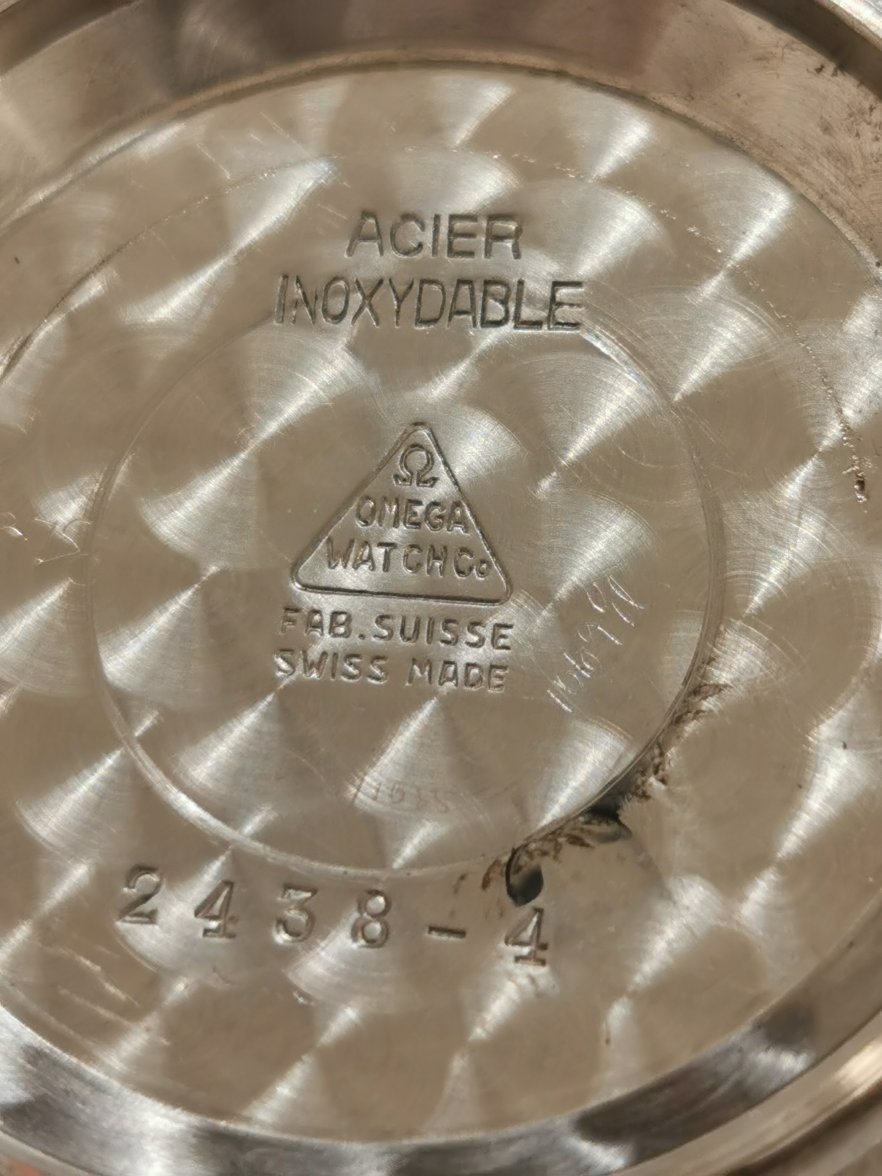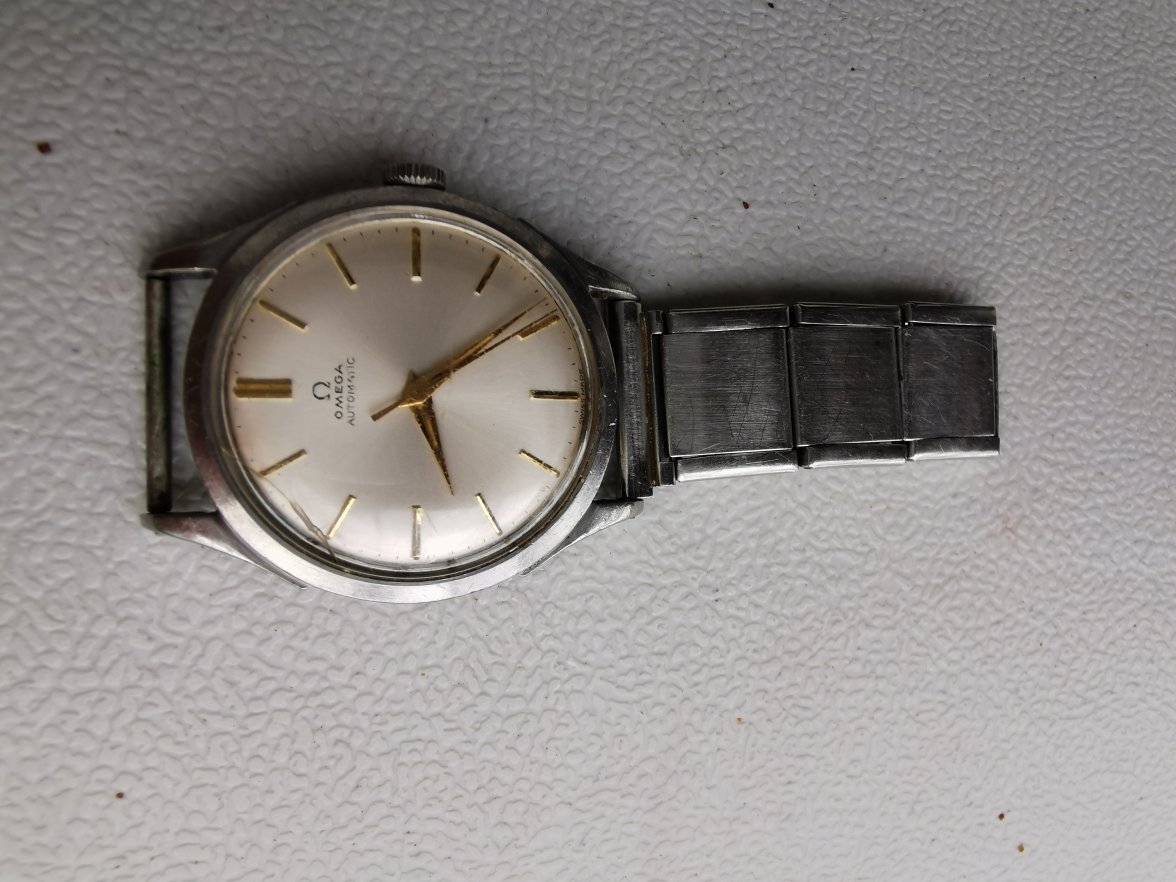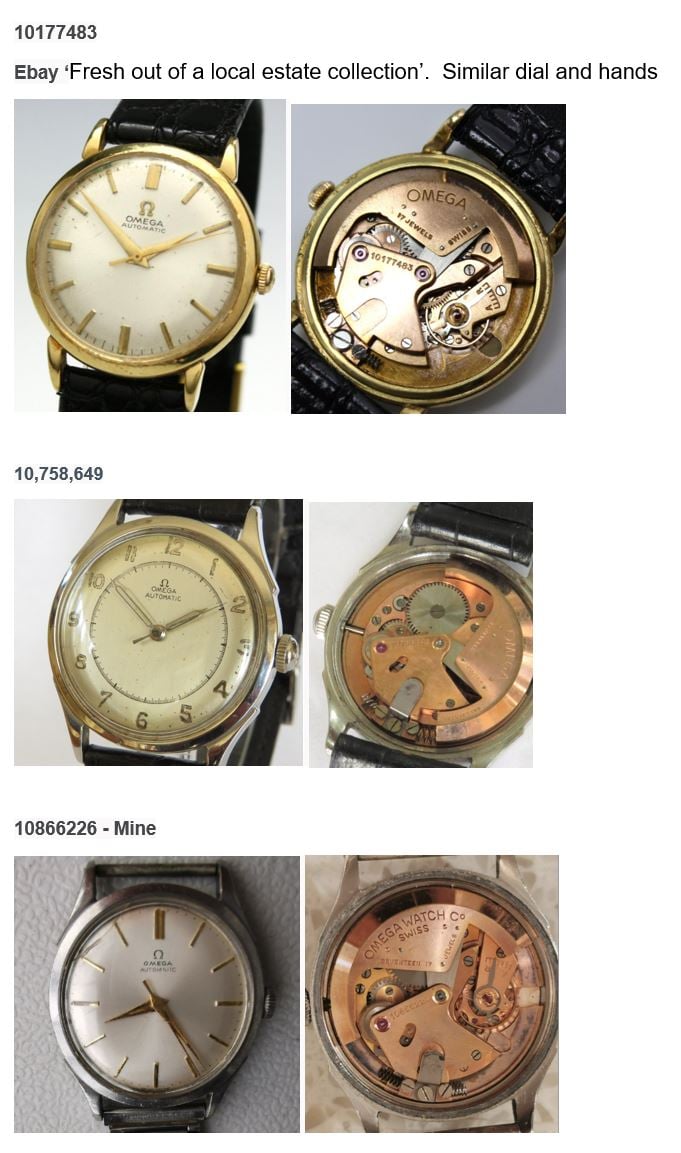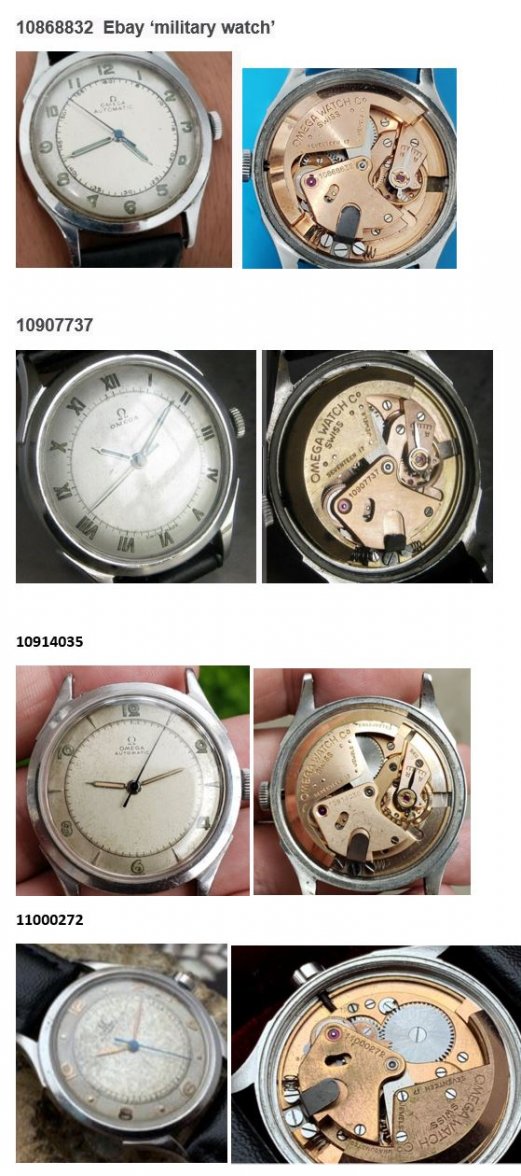- Posts
- 3
- Likes
- 2
Louise157
·I have inherited a bumper automatic Omega that I think was my dads, and I am hoping this forum may be able to help me track down some info about the dial. Dad died in 1969, and the watch has been sitting in a box in a cupboard ever since...
The reference number on the movement is 2438-4, and the serial number 10866226. With some assistance from the folk on Watchuseek, it appears the watch is likely to have been manufactured some time after 1944- perhaps 1946. The movement is likely a 28.10 RA.
If I google 2438-4 all the images that return are similar and they have what I believe is called a "central chapter ring" on their dial. My watch does not have this central ring but rather a dial that looks similar to the dials found on 1960's watches eg case ref 14761. Also this watch is stainless and the markers on the dial are gold, which doesn't seem to be a common combo for that era?
Would anyone know the process Omega used to assemble their vintage watches ie would there have been a specific combination of case reference number, movement number and dial for each model or band of serial numbers, or were different combinations used? And if the latter, who decided the combo?
I've been through old family photos and found one showing dad wearing a watch which looks like the Omega with the chapter ring style dial. If this is the case then I assume dad may have replaced the dial possibly to modernise the watch?
I'd be most grateful for any input anyone can provide. I know next to nothing about watches.... At the start of this journey I had no real interest in the watch but I've become a bit obsessed😀
The reference number on the movement is 2438-4, and the serial number 10866226. With some assistance from the folk on Watchuseek, it appears the watch is likely to have been manufactured some time after 1944- perhaps 1946. The movement is likely a 28.10 RA.
If I google 2438-4 all the images that return are similar and they have what I believe is called a "central chapter ring" on their dial. My watch does not have this central ring but rather a dial that looks similar to the dials found on 1960's watches eg case ref 14761. Also this watch is stainless and the markers on the dial are gold, which doesn't seem to be a common combo for that era?
Would anyone know the process Omega used to assemble their vintage watches ie would there have been a specific combination of case reference number, movement number and dial for each model or band of serial numbers, or were different combinations used? And if the latter, who decided the combo?
I've been through old family photos and found one showing dad wearing a watch which looks like the Omega with the chapter ring style dial. If this is the case then I assume dad may have replaced the dial possibly to modernise the watch?
I'd be most grateful for any input anyone can provide. I know next to nothing about watches.... At the start of this journey I had no real interest in the watch but I've become a bit obsessed😀
